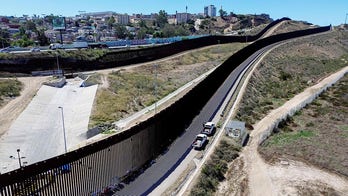Democratic presidential nominee Al Gore in 2000 won roughly 500,000 more votes than Republican nominee George W. Bush but lost the election.
In the next presidential race, Democratic challenger Sen. John Kerry lost to Bush by more than 3 million votes across all 50 states, but a mere 60,000 more votes in Ohio would have given him the election.
This year, some anticipate a similar scenario, where one candidate wins the popular vote and the other the Electoral College.
Take your best shot at predicting the final electoral map for the 2012 Presidential Election
"The odds are always against it,” Larry Sabato, director of the University of Virginia’s Center for Politics, said. “But in a close election, it's always possible. … It has happened four times in American history. Is it going to happen a fifth time this year? Nobody knows."
With some national polls showing the possibility of Romney winning the popular vote over Obama but failing to secure 270 electoral votes, an effort is underway to eliminate the Electoral College.
Which states have Obama and Romney visited the most? Check our Candidate Tracker to find out.
The so-called "college" essentially is a process in which representatives – or “electors” -- from each state vote for the president in accord with their state’s popular vote.
There are 538 electors, and the winning candidate must get the 270 majority. States are allotted electors based on their congressional delegation – one for each House members and two for each senator.
"The current system has the problem that presidential campaigns concentrate on only 10 of the 50 states, and at least four out of five Americans are left out of the process of deciding who their president should be," argued John Koza, who leads an effort to eliminate the Electoral College.
In this election, statistics show Romney and Obama spent 95 percent of their time and money in just 10 states.
Watch the results pour in like a pro with FoxNews.com's Election Command Center
Obama has traveled to Ohio 19 times for 26 political events. Together with Romney's team, Ohio was the site of 71 campaign visits.
By contrast, neither presidential candidate visited Kansas, Alaska or North Dakota. The candidates come to New York and California to raise money but not to meet voters. States that trend too Democratic or Republican get ignored, while so-called “purple states” get the attention.
"This is the structure of our country,” Sabato says. “It's the rules we played by for 200-plus years.
Sabato doesn’t think the process is illegitimate but says people should question the fairness of the popular vote being split from the Electoral College vote.
“If the answer's no, then what can we do to modify the Electoral College to change that?" he asks.
Nine states have so far joined the National Popular Vote Interstate Compact. In doing so, they agree to replace the electors for the candidate with the most popular votes in all 50 states.
The agreement goes into effect only when the states obtain the 270-vote majority.
Right now, they have 132. While the compact is based on Article II, Section 1 of the Constitution, which gives each state legislature the right to decide how to appoint its own electors, some think Congress would also have to affirm the agreement.
In the past decade, prominent such Democrats as Secretary of State Hillary Clinton, as well as Sens. Dick Durbin and Charles Schumer and even Obama in 2004 supported eliminating the college, while Republican Sens. Orrin Hatch and Senate Minority Leader Mitch McConnell opposed it.
However, the parties' positions could promptly flip should, in the reverse of 2000, the Republican wins the popular vote but loses the election because of the Electoral College.

























